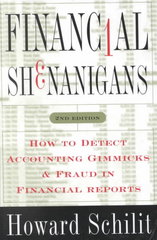Question
Percy nodded. So, what will be the total direct materials for the 200 bags? He asked, covering the Job Cost Sheet. No peeking, she teased.
Percy nodded. "So, what will be the total direct materials for the 200 bags?" He asked, covering the Job Cost Sheet. "No peeking," she teased.
Jennifer whipped out her calculator. "Give me a minute," she said punching buttons, "$294?"
"Exactly!" Percy beamed at Jennifer and turned the Job Cost Sheet back facing her. "In the cost spreadsheet you'll find extra materials for the specialty candles immediately below the standard direct materials. Remember that, for each specialty flavor, we are adding additional materials"
Jennifer nodded. "Sounds good. Now, labor is a little different, isn't it? It doesn't vary by number of ounces because cooking a 2 oz. and cooking 12 oz. takes virtually the same amount of time."
"Right, so can you tell me how much labor will cost for our hypothetical job?" asked Percy
Jennifer started thinking out loud. "Well, apprentices are only used in the Cooking department and so the cost per batch would be 0.15 hours times $10 per hour, or 1.50 per batch. Chip Makers are used in both departments, but they get paid the same rate, so we could combine their time into .12 hours and multiply that times the rate of $15 per hour, or 1.80 per batch. We can do the same thing for Candle Masters. They work a total of .06 hours in the two departments. If we take that amount times the $20 per hour wage, we get $1.20 per batch. That's a total of 4.50 per batch times 10 batches for a total of $45."
Percy nodded in approval. "That's the right math. Remember, though, when you fill out a Job Cost Sheet, you need to put down each line item separately. I think you're ready to figure out the direct materials and labor for our specialty candles. We'll worry about the overhead later."
"Percy," Jennifer typed in her email. "Here are the numbers you requested about the DM and DL costs for the first job, as well as the alternative totals based on the other two types of specialty chips you asked me to calculate." She hit send and leaned back in her chair. She felt good about what she had accomplished, especially since she felt that she wasn't really an Excel guru yet. Now, she could move on to some of the financial accounting tasks for which she felt better prepared.
A couple hours later, she paused and checked her email. "Good work," Percy's reply began. "Now you need to apply MOH so that we have a total estimated cost of the job. Once you have those numbers, I'd like you to calculate perunit cost as well so that we'll know if we are actually going to make money on this new line or not. You can refer to the Job Cost Sheet that we used to refresh your memory on how to apply overhead, but those POHRs are not correct; they are old. I've put a memo in your mailbox that has my total overhead estimates for the coming year and estimates from the Cooking and Finishing departments for the drivers they think they will be using (Below theQuestions).
"After our discussion yesterday, I decided that perhaps we should have a different POHR for each department, so I changed the sample Job Cost Sheet to reflect that. Remember that applying overhead on a department level is the same as using a single plantwide POHR, except that you apply it in chunks, once for each department."
"Good luck, and keep me advised of your progress."
Jennifer sighed. It didn't look like she was going to get a chance to make any journal entries after all.
Percy looked up as Jennifer walked into his office. "Did you get finished?"
Jennifer nodded. "I have all the numbers. I put them on the forms you gave me, but wouldn't it work better on a spreadsheet?"
"Yes, but I haven't had time to create the template yet. Do you think you can do that?" Percy asked. "Well," Jennifer replied. "I can certainly try."
"That's a good attitude," Percy replied. "Just make sure that your template is easy to read so that I can show it to the rest of the management team."
1.Use the information from Percy's spreadsheet and the purchase order for the first specialty chip job to calculate the following amounts.
a.Total DM costs for the job.b.Total DL costs for the job.
2.Referring to the estimated overhead report calculate the POHR forthe:a.Cooking department
b.Finishing department
3.Calculate the amount of MOH applied to the special order from the:a.Cooking department
b.Finishing department
4.Completeajob cost forms for the special order. 5.Calculate the following:
a.The total gross profit for the special orderb.The perunit gross profit for this order
Memo
To:Jennifer Haire
From:Percy Roberts
Date:September 9, 2016
Re:Estimated amounts for next year.
Here are my estimates of the number of drivers each department will use next year along with an estimated total overhead for each department. Please use these figures to calculate a POHR for each department, and then use that rate to apply overhead.
Roberts Chips Co.
Department
Cooking Finishing
Drivers Used
Total Overhead
25000 DL hours $ 310,000.00 125000 batches $ 675,000.00
Step by Step Solution
There are 3 Steps involved in it
Step: 1

Get Instant Access to Expert-Tailored Solutions
See step-by-step solutions with expert insights and AI powered tools for academic success
Step: 2

Step: 3

Ace Your Homework with AI
Get the answers you need in no time with our AI-driven, step-by-step assistance
Get Started


